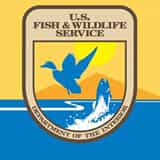
Service Proposes Delisting Three Fox Subspecies on Northern Channel Islands Due to Recovery, Highlighting Historic Endangered Species Act Success
Representing the fastest successful recovery for any Endangered Species Act (ESA)-listed mammal in the United States, the U.S. Fish and Wildlife Service (Service) recently announced a proposal to delist three subspecies of island fox native to California’s Channel Islands. The removal of the San Miguel, Santa Rosa and Santa Cruz Island fox subspecies from the Federal List of Threatened and Endangered Wildlife would be an historic success for the multiple partners involved in recovery efforts.
The Service is also proposing to downlist, or improve the status of, island foxes on Santa Catalina Island from endangered to threatened under the ESA.
Since the island foxes were listed under the ESA in 2004, the Service and
its partners have worked to eliminate or greatly reduce the primary threats
facing the subspecies, namely predation, disease and low population numbers.
The best available scientific data now suggests that populations of these
island fox subspecies have recovered to self-sustaining levels. To ensure
that northern Channel Island fox populations remain secure well into the
future, the Service is also proposing a monitoring plan.
“The remarkable recovery efforts of land managers and conservation
partners over the past two decades on behalf of the Channel Island fox
is the reason for this historic recovery success,” said Dan Ashe,
Director of the U.S. Fish and Wildlife Service. “The speed at which
these subspecies have recovered points to the strength of the ESA in focusing
conservation attention and catalyzing recovery actions, and demonstrates
what we can achieve together.”
On March 5, 2004, four of the six subspecies of island fox endemic to
the California Channel Islands were listed as endangered following catastrophic
population declines of over 90 percent, due primarily to predation by
golden eagles on the northern Channel Islands and a canine distemper outbreak
on Santa Catalina Island.
To halt the downward spiral of island fox populations, the Service partnered
with the National Park Service, The Nature Conservancy, and Catalina Island
Conservancy to launch a series of recovery actions that included relocating
non-native golden eagles from the northern Channel Islands; removing the
non-native species that provided prey for the eagles; vaccinating foxes
against canine distemper; and breeding foxes in captivity and reestablishing
them to the wild. The recovery effort also included monitoring wild island
fox populations and reestablishing bald eagles to their historic territories
on the Channel Islands. As a result of these strategies, the island fox
subspecies on the four islands have shown dramatic improvement.
In March 2015, the Service released the final
Recovery Plan for the four island fox subspecies, outlining proven methods for ensuring
the subspecies’ long-term viability in the wild, including a golden
eagle management strategy and disease epidemic response plan. In conjunction
with the release of the final Recovery Plan, the Service also initiated
status reviews of the four subspecies to determine if any of the subspecies
warrant consideration for reclassification or removal from the Federal
List of Threatened and Endangered Wildlife and accepted public comments.
“We look forward to continuing our collaborations with land managers
and conservation partners on Santa Cruz, Santa Rosa, San Miguel and Santa
Catalina Islands,” said Ashe. “Together, we will continue
to monitor island fox populations to ensure their long-term survival in
the wild.”
While data suggest island fox populations on Santa Catalina have also
increased to historic levels, the potential for a disease outbreak remains
an existing threat. Therefore, the Service recommends the subspecies’
status be reclassified from endangered to threatened, thus retaining ESA
protections.
A copy of the notice of availability for the proposed rule and post-delisting
monitoring plan will publish in the
Federal Register on February 16, 2016, under docket number FWS–R8–ES–2015–0170,
opening a 60-day comment period. The Service will accept comments until
April 18, 2016. The proposed rule will also be peer-reviewed by academia
in the field of conservation biology.
The proposed rule is available on our website at http://www.fws.gov/ventura.
A limited number of printed copies are available by request. You may request
the documents or submit comments by any of the following methods:
- E-mail: fw8islandfox@fws.gov
- U.S. Mail: Field Supervisor; U.S. Fish and Wildlife Service; Ventura Fish and Wildlife Office; 2493 Portola Road, Suite B; Ventura, CA 93003.
- Fax: Attn: Field Supervisor; U.S. Fish and Wildlife Service; Ventura Fish and Wildlife Office; (805) 644–3958.
The Endangered Species Act is an essential tool for conserving the nation’s most at-risk wildlife, as well as the land and water on which they depend for habitat. The ESA has prevented more than 99 percent of the species listed from going extinct, serving as the critical safety net for wildlife that Congress intended when it passed the law 40 years ago. In addition, the ESA has helped move many species from the brink of extinction to the path to recovery, including California condors, Florida panthers and whooping cranes. The Obama Administration has delisted more species due to recovery than any prior administration, including the Oregon Chub, Virginia northern flying squirrel and brown pelican.
Established in 1987, the Ventura Fish and Wildlife Office works to conserve and protect threatened and endangered fish, wildlife and plants across the central and southern California coast, collaborating with communities and conservation partners to build a future that supports both people and our unique and diverse natural resources. For more information, visit http://ventura.fws.gov or follow us on Facebook.
